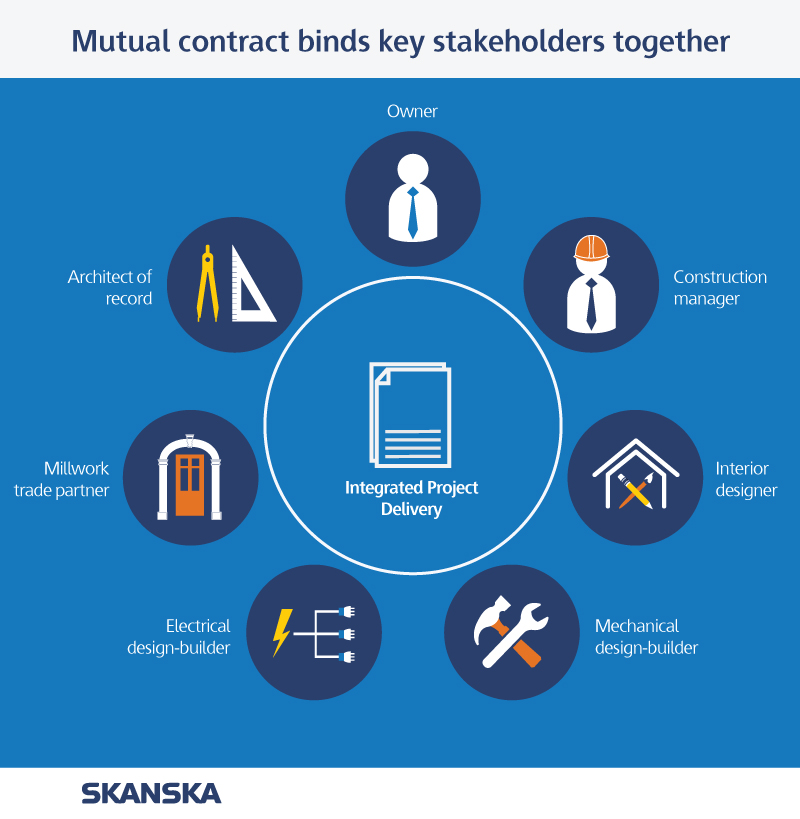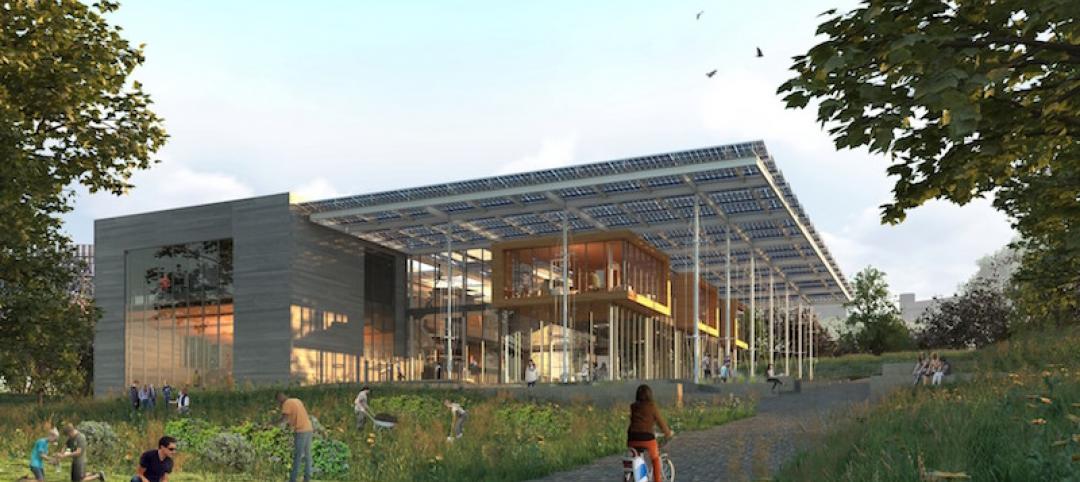More and more, teamwork, trust and collaboration are seen as key to successful project delivery. Yet, few projects seek to maximize the meanings behind those words by making them central to how the project team is structured and functions.
One approach that does so—integrated project delivery—binds major stakeholders through a mutual contract such that individual stakeholder success is tied to overall project success, with risk and reward both capped and shared.
While IPD is rare—in part because of the greater up-front effort required—the results are typically powerful, with better cost and schedule performances and a smoother delivery process.
To help others learn how IPD might help their projects, we recently checked in with the stakeholder team behind the second true IPD project with which Skanska is involved, an intensive care unit renovation at The George Washington University Hospital in Washington, D.C.
Here’s some of what this team recently had to share about this project, when on-site work was just getting underway.
1. All in: Seven organizations signed the IPD agreement: Universal Health Services (owner); Skanska (construction manager); WJ Architects (architect of record); In.Design (interior designer); Southland Industries (mechanical design-builder); M.C. Dean (electrical design-builder); and Clark’s Lumber and Millwork (millwork trade partner). With this arrangement, there are no separate contracts between the owner and the architect, construction managers and key trade contractors, and so on—every key firm is part of one contract to align all interests with that of the project.
2. Project finances in a new light: Owner Universal Health Services is accepting all risk for project cost and the overhead of the signatory partners, said Christian Pikel, UHS regional project manager. However, each partner’s profit is put at risk through a shared pool. Any savings from the target budget will be shared among participants, up to the profit pool cap.
3. Consensus-based objectives: Early in the project, team members and end users came together to define the project’s “conditions of satisfaction”—common team objectives. They crafted 10 of these statements, which include improving doctor, nurse and staff work flows within the sixth floor ICU; eliminating unanticipated noise from impacting adjacent spaces (the project is directly above an active intensive care unit); building a work environment in which all team participants demonstrate leadership roles and process improvement; and incorporate surge capacity within the project budget.
The team has developed a spreadsheet containing all conditions, and at every meeting they go down the list and rate their recent performance for each, said Andy Rhodes, Southland design engineer/project manager.
4. A3 library: IPD’s team-based nature makes it ideal for incorporating the principles and tools of lean construction, which focuses on eliminating waste and continual improvement. Of this project’s lean aspects, A3s are being used not just a single-page way to identify, analyze and propose solutions for problems, but as a means of sharing that thinking across projects.
“We were able to pull an A3 on a bariatric issue from another project,” said Aimee Fogarty, Skanska project manager. “By re-examining that document, we didn’t have to start from scratch.”
5. Better-informed design: This project’s designers are finding that IPD enables them to get the input they need to produce a more realistic design the first time.
“It helps clarify expectations much sooner, instead of the typical process of doing value engineering later on in traditional models,” said Jenna Santamaria, In.Design senior designer. “I really get excited and enjoy when we have some healthy tension going on in the Big Room: we get to start horse trading back and forth and asking ourselves, ‘What can we do to make this work?’”
6. Trust in the Big Room: IPD requires more up-front participation from all parties, including significant time spent in regular in-person Big Room meetings in which all team participants work together on project issues. Such meetings require a different mindset. For example, everyone has equal status and say in all matters. To keep everyone focused, multitasking and sidebar conversations aren’t allowed. And trust is of paramount importance.
“Each expert involved in the project must trust each other’s judgment because the success of the team determines the overall success of the project,” said Jennifer Macks, Skanska vice president. “Also, to make the most of the collaborative communication and problem-solving scenario, everyone must be comfortable with one another and share their expertise.”
Read more posts from Skanska's Constructive Thinking Blog
More from Author
Skanska | Dec 4, 2023
4 key innovations and construction trends across airport design
Here are some of the key trends Skanska is seeing in the aviation sector, from congestion solutions to sustainability.
Skanska | Jun 29, 2023
K-12 school construction: 5 ways strong community relations can lead to success
When constructing a K-12 school, building positive relationships with the community—including students, parents, school staff and residents—is critical to the success of the project. Here are five ways Skanska puts the community first when building K-12 schools in the Pacific Northwest.
Skanska | Mar 14, 2023
Skanska tests robots to keep construction sites clean
What if we could increase consistency and efficiency with housekeeping by automating this process with a robot? Introducing: Spot.
Skanska | Jan 27, 2023
Key takeaways from Autodesk University 2022
Autodesk laid out its long-term vision to drive digital collaboration through cloud-based solutions and emphasized the importance of connecting people, processes and data.
Skanska | Dec 5, 2022
5 ways sustainability professionals can help reduce construction's carbon footprint
Mark Chen, Sustainability Manager at Skanska, has found five specific ways to help the construction industry reduce its carbon footprint.
Skanska | Jul 5, 2022
Tour the new Patricia Reser Center for the Arts in Oregon
This month, the community of Beaverton, Oregon, welcomed a new haven for artistic expression with the opening of Patricia Reser Center for the Arts (The Reser).
Skanska | Jun 22, 2018
What owners should know before choosing the design-build project delivery method
Outside of drawing up a well-written contract, owners often overlook a key attribute that can significantly impact the success of a design-build project, writes Skanska’s Julie Hyson.
Skanska | Dec 7, 2017
Busting the myths: What the “S-word” can mean for construction and development
Sustainability, it’s a trendy term. The problem, however, is that it’s being used in so many different ways that people don’t even know what it means anymore.
Skanska | Aug 15, 2016
Future proofing hospitals
By improving the physical layout of hospitals and medical facilities, we can enhance and increase safety mechanisms, improve care, and help reduce the exposure to medical errors, writes Skanska USA's Andrew Quirk.
Skanska | May 6, 2016
Infographic: The greening of healthcare
By adopting green building and sustainable practices, healthcare facilities can save $15 billion over 10 years. Skanska's infographic spells it all out.















